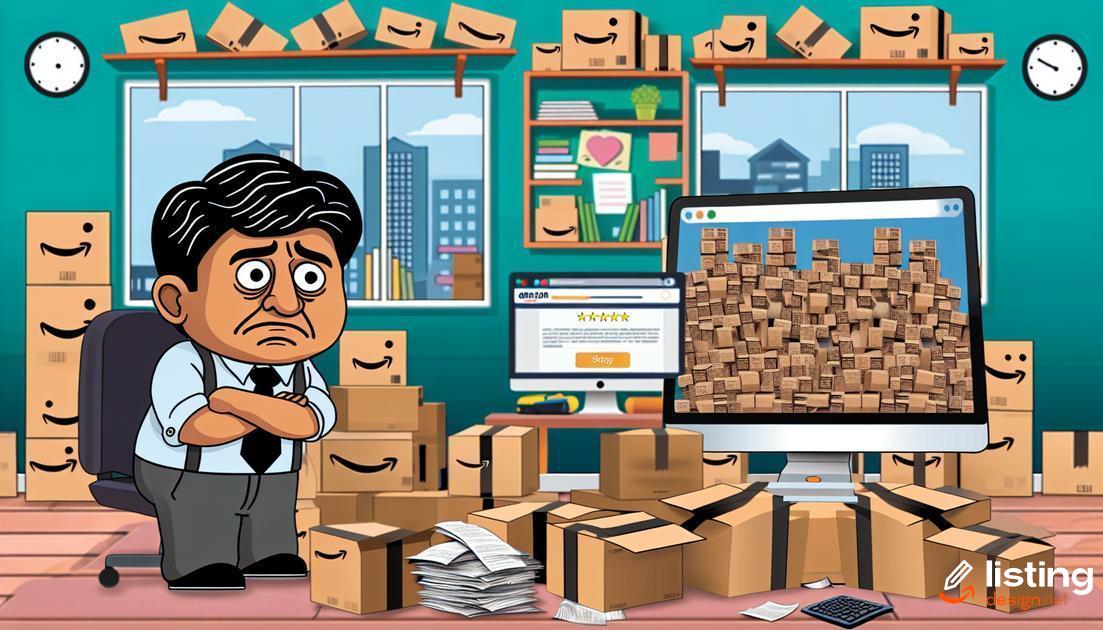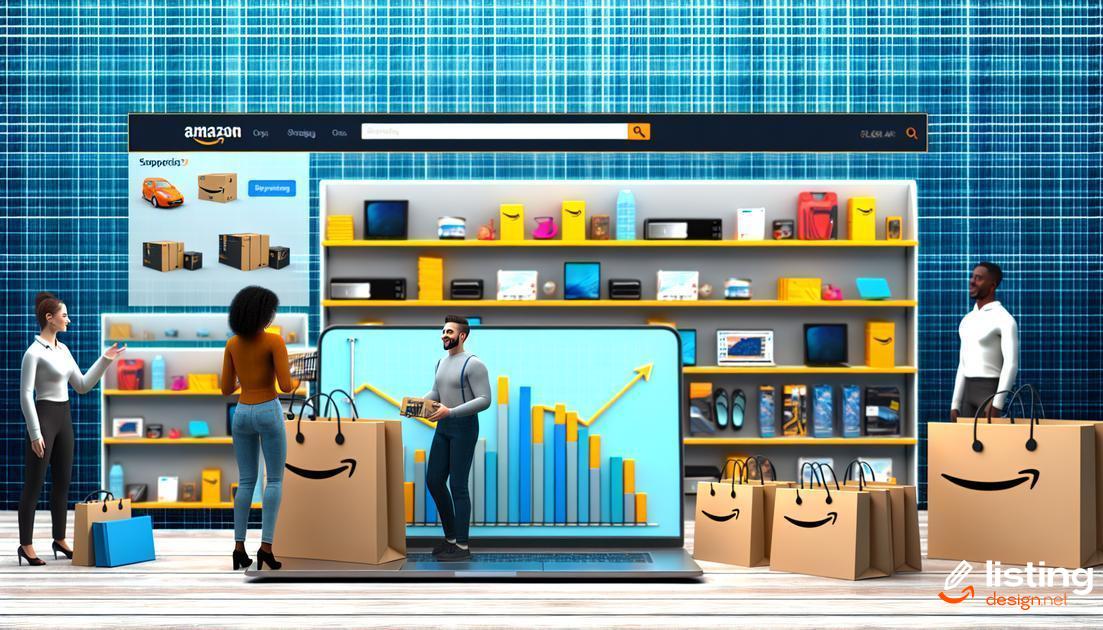Selling on Amazon worth it? Many entrepreneurs grapple with this question as they consider the vast opportunities Amazon presents. As the largest online marketplace, Amazon offers unparalleled access to millions of customers. However, navigating the complexities of selling on such a competitive platform can be daunting. In this post, we will delve into the advantages and disadvantages of selling on Amazon, how to get started, and what to expect in terms of fees and challenges. We’ll also share some success stories and provide tips to help you maximize your sales. By the end, you’ll have a clear understanding of whether selling on Amazon is the right move for your business.
Table of Contents
The Pros of Selling on Amazon
One of the key advantages of selling on Amazon is the massive customer base. With millions of active users, your products get exposure to a larger audience than most other online platforms. Amazon’s reputation and trustworthiness can also help increase the likelihood of making a sale.
Another benefit is the ability to leverage Amazon’s fulfillment services through Fulfillment by Amazon (FBA). This program allows sellers to store their products in Amazon’s warehouses, where Amazon handles the packing, shipping, and customer service. This not only saves time but also puts your products under Amazon Prime, attracting even more buyers.
Amazon also offers enhanced marketing and advertising options. With tools like Sponsored Products and Amazon Stores, sellers have the chance to promote their products effectively within the Amazon ecosystem. This can significantly boost visibility and sales.
The platform’s trust factor cannot be overstated. Customers often prefer purchasing from Amazon due to its reliable delivery, easy return policies, and exceptional customer service. This trust extends to third-party sellers, adding an extra layer of credibility to your products.
Lastly, Amazon provides various analytics and reporting tools to help sellers track performance, customer behavior, and sales trends. These insights are invaluable for making informed decisions and strategizing for future growth.
The Cons of Selling on Amazon

One of the major downsides of selling on Amazon is the high competition. With thousands of sellers in nearly every category, standing out can be tough. Amazon’s platform also allows buyers to easily compare products, making it hard to maintain competitive pricing.
Another issue is the fee structure. Amazon charges various fees, including referral fees, FBA fees, and storage fees. These can add up quickly, eroding your profit margins. Sellers must also consider the cost of advertising and promotions to gain visibility on the platform.
Additionally, limited brand control is a significant concern. Amazon’s policies can restrict how you present your brand, and product listings can sometimes be altered by other sellers. This can lead to brand dilution and inconsistent customer experiences.
Moreover, the risk of account suspension looms large. Amazon has strict compliance policies, and any violation, whether intentional or not, can result in account suspension. Recovering from such an event can be time-consuming and impact your sales negatively.
Lastly, inventory management can be challenging. With Amazon’s FBA program, you have to ensure that your stock levels are optimal to avoid out-of-stock situations or excessive storage fees for unsold inventory.
How to Start Selling on Amazon
Setting Up Your Amazon Seller Account: First, visit the Amazon Seller Central website. Choose between an individual or professional account based on your needs. Individual accounts are best if you plan to sell fewer than 40 items a month. Professional accounts offer more tools and are for higher-volume sellers. Provide necessary information and verify your identity.
Choosing Your Product: Research products that have high demand but less competition. Use tools like Jungle Scout or Helium 10 to analyze market trends. Select products that you’re passionate about and can source easily. Avoid restricted categories unless you have approval from Amazon.
Listing Your Products: Create compelling product listings with high-quality images and detailed descriptions. Make sure your titles are optimized for SEO, using relevant keywords. Fill out all necessary fields, such as bullet points, product description, and back-end search terms. The more detailed the information, the better.
Handling Fulfillment: Decide between Fulfillment by Amazon (FBA) and Fulfillment by Merchant (FBM). FBA means Amazon handles storage, packing, and shipping for a fee, freeing up your time. FBM gives you complete control but means more work.
Marketing Your Products: Utilize Amazon’s advertising tools like Sponsored Products and Amazon PPC to increase visibility. Leverage social media and email marketing to drive traffic to your listings. Consider offering promotions and discounts to attract initial buyers and gather reviews.
Monitoring and Optimizing: Keep track of your sales performance and customer feedback. Use Amazon analytics to understand which products are performing well and which need improvements. Regularly update your listings and adjust pricing or marketing strategies as needed.
Success Stories of Amazon Sellers

Many entrepreneurs have found immense success selling on Amazon. These success stories often share common themes: dedication, leveraging Amazon’s vast customer base, and effective use of marketing tools. Take, for instance, John Doe, who started with a small investment in private label products and now generates millions in annual revenue.
Emily’s Journey
Emily was initially a stay-at-home mom who ventured into selling handmade crafts on Amazon. Through consistent effort and learning the ins and outs of Amazon SEO, her business flourished, allowing her to hire additional help and scale her operations.
Mark’s Amazon Retail
Mark took advantage of Amazon’s FBA (Fulfillment by Amazon) program. By sourcing quality products from wholesalers and focusing on customer service, Mark’s retail business saw exponential growth. FBA enabled him to handle large volumes without the hassle of logistics.
These stories highlight the potential for diverse types of sellers to find success on Amazon. Whether it’s through private labels, handmade products, or retail arbitrage, the platform offers numerous opportunities for growth and profitability.
Common Challenges in Selling on Amazon
Understanding Amazon’s Fee Structure
One of the main challenges sellers face on Amazon is its complex fee structure. There are various fees involved, including referral fees, fulfillment fees, and storage fees. These costs can add up quickly and affect profit margins, making it crucial to understand and calculate these fees beforehand.
Handling Competition
Amazon’s marketplace is highly competitive, with numerous sellers often offering similar products. It can be difficult to stand out and attract customers. Sellers need to constantly monitor competitors’ prices, reviews, and feedback to stay ahead.
Maintaining Inventory Levels
Effective inventory management is essential yet challenging. Overstocking can lead to increased storage fees, while understocking risks losing sales and customer trust. Sellers must accurately forecast demand and keep an optimized stock level.
Dealing with Fulfillment Requirements
Amazon has strict fulfillment requirements, especially for those using Fulfillment by Amazon (FBA). Meeting these standards requires adherence to specific packaging, labeling, and shipping guidelines. Any mistakes can lead to penalties or delayed deliveries.
Managing Customer Service
Sellers must provide excellent customer service to maintain high ratings and avoid negative feedback. This includes handling returns, exchanges, and addressing concerns promptly. Poor customer service can significantly impact a seller’s reputation on the platform.
Navigating Amazon’s Policies
Amazon’s policies and guidelines frequently change, and keeping up with these updates is essential. Sellers need to comply with all rules to avoid account suspension or delisting of products. This requires constant vigilance and adherence to best practices.
Tips to Maximize Amazon Sales

Optimize Your Product Listings: To increase your sales on Amazon, it’s crucial to optimize your product listings. Ensure that your product titles are clear and include relevant keywords. Use high-quality images and provide detailed descriptions that highlight the benefits of your products.
Leverage Amazon Advertising: Using Amazon’s pay-per-click (PPC) advertising can help you reach a wider audience. Carefully select relevant keywords and monitor your campaigns to optimize performance.
Improve Your Seller Rating: Customer satisfaction is key to maximizing sales. Provide excellent customer service, respond to inquiries quickly, and work to resolve any issues promptly. Strive to maintain positive feedback and a high seller rating.
Utilize Fulfillment by Amazon (FBA): Using FBA can improve your product visibility and sales. With FBA, Amazon handles storage, packing, and shipping, which also makes your products eligible for Prime shipping.
Monitor Your Competitors: Keep an eye on your competitors to understand their strategies. Analyze their pricing, product listings, and customer feedback to identify areas where you can improve.
Offer Competitive Pricing: Competitive pricing can drive more sales. Regularly review your prices and adjust them as needed to stay competitive while still making a profit.
Run Promotions: Offering discounts, coupons, or special deals can attract more buyers. Time your promotions strategically to take advantage of peak shopping seasons or special events.
Utilize Amazon’s Tools: Amazon offers several tools and services to help sellers. For instance, the Amazon Brand Registry can protect your brand and help you stand out with enhanced content. Use these tools to your advantage.
Analyze and Adjust: Constantly analyze your sales data and customer feedback to identify trends. Use this information to make informed decisions and continuously improve your sales strategy.
Amazon Fee Structures: What to Expect
Selling on Amazon comes with various fee structures that every seller should be aware of. Understanding these fees is crucial in determining if selling on Amazon is the right choice for your business.
Referral Fees
Amazon charges a referral fee for each item sold. This fee is a percentage of the total sales price and varies by product category. For most categories, this fee ranges from 6% to 45%, with the average fee being around 15%.
Fulfillment Fees
If you choose to use Amazon’s Fulfillment by Amazon (FBA) service, additional fees will apply. These include monthly storage fees based on the volume of your products, and fulfillment fees that cover picking, packing, and shipping your orders.
Monthly Subscription Fees
Professional sellers are required to pay a monthly subscription fee of $39.99. This fee allows you access to valuable tools and reports, and exempt you from per-item listing fees.
Other Potential Fees
Amazon also imposes variable closing fees on media items and high-volume listing fees for products exceeding certain quantity thresholds. Additionally, sellers using premium placement services or advertising will incur extra costs.
Knowing these fees helps sellers price their products adequately and manage their profit margins effectively.
Alternatives to Selling on Amazon

There are several platforms and methods available as alternatives to selling on Amazon. Each offers unique benefits and caters to different types of sellers. Here are some popular options:
eBay
eBay is a well-established marketplace where you can auction your products or set fixed prices. It is ideal for selling used, rare, or collectible items. The selling process is straightforward, and eBay provides seller protections and promotional tools.
Etsy
Etsy is the go-to platform for handmade, vintage, and craft supply items. If you create artisanal products or have unique vintage finds, this marketplace targets a niche audience that values creativity and originality.
Shopify
Shopify allows you to create your own online store with complete control over branding and customer experience. This option requires more effort in terms of marketing but provides greater flexibility and control over your business.
Walmart Marketplace
Walmart’s online marketplace is becoming a strong competitor to Amazon. It offers access to a large customer base and benefits from Walmart’s brand recognition and trust. The application process may be more stringent, but it can be worth it for the exposure.
Facebook Marketplace
Facebook Marketplace is an increasingly popular platform for sellers of all kinds. With easy integration with your social media presence, it’s a great way to reach local buyers and leverage the power of social networks for promotion.
Local Options
Local options like Craigslist and local e-commerce platforms also provide ways to sell products without dealing with shipping logistics. This is particularly useful for bulky or handmade items that are better suited for local sales.
Each of these platforms has its strengths, and it’s important to consider your specific product types, target audience, and business goals when choosing the best alternative to Amazon.


